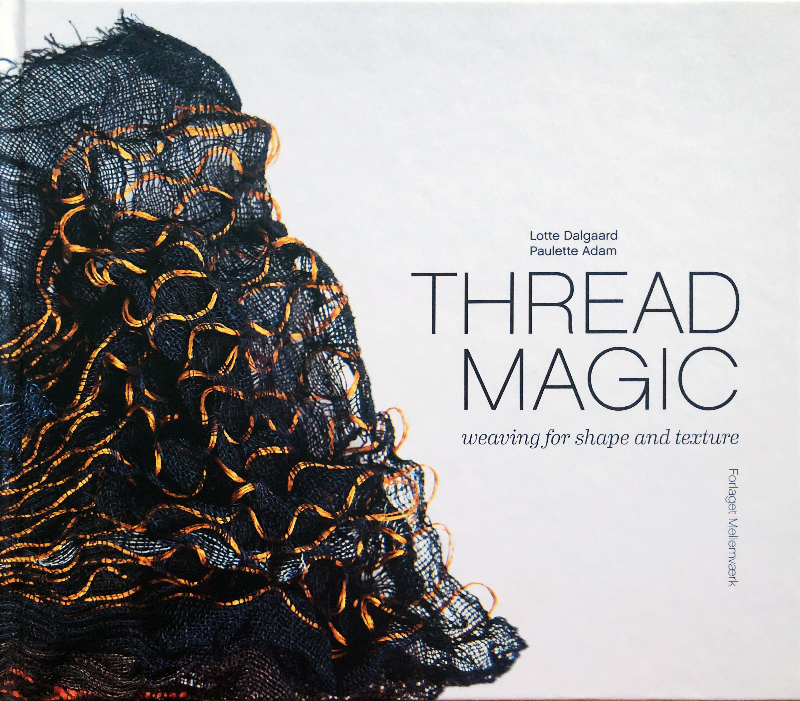
Thread Magic – Weaving for Shape and Texture, Lotte Dalgaard and Paulette Adamson, Forlaget Mellemvaerk/DK, 2020, ISBN978-87-999832-3-0, text English, price 400 DKK (approx.53 Euro)
Lotte Dalgaard is a well-known Danish weaver most noted for her fantastic weave structures. They allow fabrics to take on three-dimensional shapes through the use of active and passive threads. Paulette Adamson has been working with yarns for a long time, knows weaving materials better than anyone, and has produced several books in collaboration with Lotte Dalgaard.
The book was translated from Danish by another well-known weaver, Ann Richards from the UK who is equally passionate about sophisticated three-dimensional weave structures. This is a real stroke of luck because it means that the magic of weaving with “active” threads – threads twisted beyond the usual level, elastic threads and threads that shrink – can be fully appreciated in the English publication as well.
In this book, Lotte and Paulette mainly present fabrics for clothing and accessories such as shawls, scarves etc. They illustrate how raised lines as well as folds and spirals can be woven into a fabric, how three-dimensional structures are created and how perfectly ordinary threads can essentially be made to react in almost magical ways by combining them with “active” yarns.
The book starts with a chapter on spinning, a very important subject because creating effects requires an understanding of what S and Z twist means and why overtwisting a yarn can be so effective. Another chapter presents different types of active yarns as well as initial examples of fabrics, a soft thick scarf and a T-shirt that snugly fits the body.
Further chapters go into textures, designing samples and experimenting, help and advice on weaving with active yarns, and finishing fabrics by means of hot or cold water or steam setting. Each chapter contains examples for readers to try out themselves which appear very simple, but actually require a certain minimum of weaving knowledge. For instance, an understanding of basic weave structures is necessary to fully focus on the special effects.
The final chapter, “Inspiration and Ideas” showcases eighteen further examples of structures which were created during preparation of the book. This is followed by yarn and shrinkage tables, a yarn table of all the examples used in the book with a list of suppliers (!), conversion tables, a small bibliography, an index and a glossary.
One of the suppliers is the “Garnindkøbsforeningen af 1998” association; as far as I am aware, it was established upon Lotte Dalgaard’s initiative and purchases yarn for its members. Membership is 150 DKK (about €20). Website: www.yarn.dk